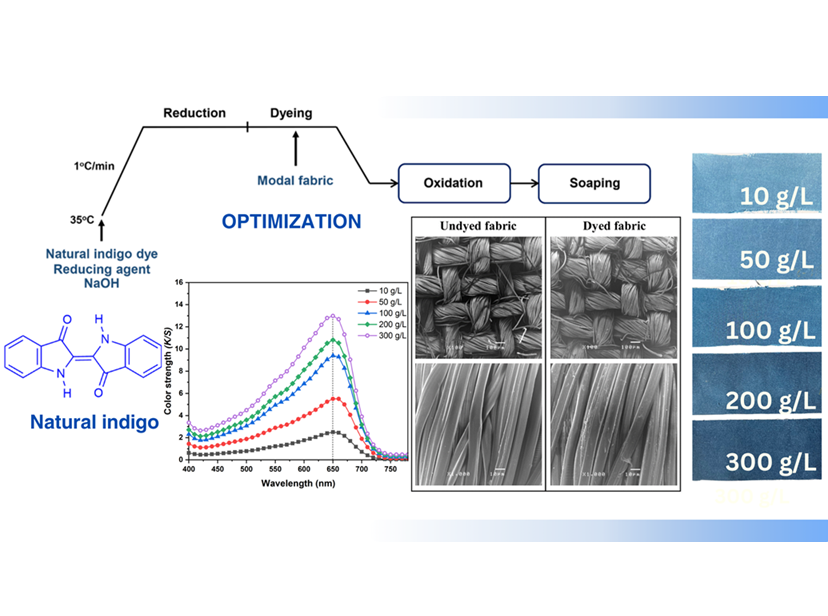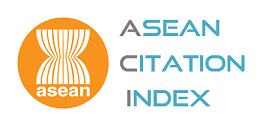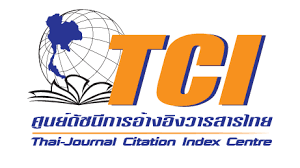Optimization of Indigo Dyeing on Modal Fabrics Using Thiourea Dioxide as an Environmentally Friendly Reducing Agent
DOI:
https://doi.org/10.55713/jmmm.v35i3.2345Keywords:
thiourea dioxide, reducing agent, indigo, modal, dyeingAbstract
This investigation examines the potential of thiourea dioxide as an environmentally reducing agent for dyeing of natural indigo on modal fabrics. Although traditional sodium dithionite is effective, its sulfur by-products generate environmental concerns. Thiourea dioxide, which provides a more environmentally friendly alternative, was studied under various dyeing conditions. In this study, six dyeing parameters, including thiourea dioxide and sodium hydroxide concentrations, reduction temperature, reduction duration, dyeing time, and reduction-oxidation cycles, were optimized to enhance color strength. Results indicated that the most favorable reduction conditions were achieved when 80 g/L of thiourea dioxide and 2 g/L of sodium hydroxide were heated to 50°C for 30 min and at the dyeing duration of 30 min. Moreover, the repeated reduction and oxidation cycles continuously improve color strength of the dyed fabric. The indigo dyed fabrics had excellent wash fastness, good light fastness, and slightly lower rub fastness.
Downloads
References
I. Shahid ul, L. J. Rather, M. Shabbir, J. Sheikh, M. N. Bukhari, M. A. Khan, and F. Mohammad, "Exploiting the potential of polyphenolic biomordants in environmentally friendly coloration of wool with natural dye from Butea monosperma flower extract," Journal of Natural Fibers, vol. 16, pp. 512-523, 2019. DOI: https://doi.org/10.1080/15440478.2018.1426080
A. P. Periyasamy, and S. Periyasami, "Critical review on sustainability in denim: A step toward sustainable production and consumption of denim," ACS Omega, vol. 8, pp. 4472-4490, 2023. DOI: https://doi.org/10.1021/acsomega.2c06374
S. Adeel, M. Zuber, M. Kınık, A. Zor, S. Büyükkol, A. D. Kahraman, M. Ozomay, A. Dol, Z. Lehimler, and S. P. Khattak, "Green application of isolated colorant from neem bark for mordant-coated wool: Optimization of dyeing and mordanting for shade development," Coatings, vol. 13, 2023. DOI: https://doi.org/10.3390/coatings13091639
E. D. Głowacki, G. Voss, L. Leonat, M. Irimia-Vladu, S. Bauer, and N. S. Sariciftci, "Indigo and tyrian purple - From ancient natural dyes to modern organic semiconductors," Israel Journal of Chemistry, vol. 52, pp. 540-551, 2012. DOI: https://doi.org/10.1002/ijch.201100130
R. Mongkholrattanasit, C. Klaichoi, N. Sasithorn, W. Changmuang, K. Manarungwit, K. Maha-In, P. Ruenma, N. Boonkerd, N. Sangaphat, and M. Pangsai, "Screen printing on silk fabric using natural indigo," Vlakna a Textil, vol. 25, pp. 51-56, 2018.
K. Kunttou, S. Hongyo, S. Maeda, and K. Mishima, "Dyeing Polyester Fabrics with Indigo," Textile Research Journal, vol. 75, pp. 149-153, 2005. DOI: https://doi.org/10.1177/004051750507500211
B. Semet, and G. E. Gruninger, "Iron(II) salt complexes as alternatives to hydrosulphite in vat dyeing," Melliand Textilberichte, vol. 76, pp. 161-164, 1995.
J. N. Chakraborty, Fundamentals and practices in colouration of textiles, 2009. DOI: https://doi.org/10.1533/9780857092823
M. Ben Ticha, N. Meksi, N. Drira, M. Kechida, and M. F. Mhenni, "The synergetic effect of α-hydroxycarbonyls mixtures used as green reducing agent on the indigo dyeing process," Chemical Industry and Chemical Engineering Quarterly, vol. 20, pp. 463-470, 2014. DOI: https://doi.org/10.2298/CICEQ130507028B
N. Meksi, M. Ben Ticha, M. Kechida, and M. F. Mhenni, "Using of ecofriendly α-hydroxycarbonyls as reducing agents to replace sodium dithionite in indigo dyeing processes," Journal of Cleaner Production, vol. 24, pp. 149-158, 2012. DOI: https://doi.org/10.1016/j.jclepro.2011.11.062
N. Meksi, M. Kechida, and F. Mhenni, "Cotton dyeing by indigo with the borohydride process: Effect of some experimental conditions on indigo reduction and dyeing quality," Chemical Engineering Journal, vol. 131, pp. 187-193, 2007. DOI: https://doi.org/10.1016/j.cej.2007.01.001
T. M. Hsu, D. H. Welner, Z. N. Russ, B. Cervantes, R. L. Prathuri, P. D. Adams, and J. E. Dueber, "Employing a biochemical protecting group for a sustainable indigo dyeing strategy," Nature Chemical Biology, vol. 14, pp. 256-261, 2018. DOI: https://doi.org/10.1038/nchembio.2552
S. K. Nicholson, and P. John, "The mechanism of bacterial indigo reduction," Applied Microbiology and Biotechnology, vol. 68, pp. 117-123, 2005. DOI: https://doi.org/10.1007/s00253-004-1839-4
L. Saikhao, J. Setthayanond, T. Karpkird, T. Bechtold, and P. Suwanruji, "Green reducing agents for indigo dyeing on cotton fabrics," Journal of Cleaner Production, vol. 197, pp. 106-113, 2018. DOI: https://doi.org/10.1016/j.jclepro.2018.06.199
A. Vuorema, P. John, M. Keskitalo, M. A. Kulandainathan, and F. Marken, "Electrochemical and sonoelectrochemical monitoring of indigo reduction by glucose," Dyes and Pigments, vol. 76, pp. 542-549, 2008. DOI: https://doi.org/10.1016/j.dyepig.2006.06.044
M. Abdelileh, A. P. Manian, D. Rhomberg, M. Ben Ticha, N. Meksi, N. Aguiló-Aguayo, and T. Bechtold, "Calcium-iron-D-gluconate complexes for the indirect cathodic reduction of indigo in denim dyeing: A greener alternative to non-regenerable chemicals," Journal of Cleaner Production, vol. 266, p. 121753, 2020. DOI: https://doi.org/10.1016/j.jclepro.2020.121753
A. Roessler, D. Crettenand, O. Dossenbach, W. Marte, and P. Rys, "Direct electrochemical reduction of indigo," Electrochimica Acta, vol. 47, pp. 1989-1995, 2002. DOI: https://doi.org/10.1016/S0013-4686(02)00028-2
A. Roessler, O. Dossenbach, W. Marte, and P. Rys, "Electrocatalytic hydrogenation of vat dyes," Dyes and Pigments, vol. 54, pp. 141-146, 2002. DOI: https://doi.org/10.1016/S0143-7208(02)00035-9
L. Saikhao, J. Setthayanond, T. Karpkird, and P. Suwanruji, "Mao berry as a green reducing agent in natural indigo dyeing on cotton fabrics," Journal of the Textile Institute, vol. 113, pp. 1538-1544, 2022. DOI: https://doi.org/10.1080/00405000.2021.1936793
Y. Shin, M. Choi, and D. I. Yoo, "Utilization of fruit by-products for organic reducing agent in indigo dyeing," Fibers and Polymers, vol. 14, pp. 2027-2031, 2013. DOI: https://doi.org/10.1007/s12221-013-2027-x
J. Shore, Colorants and Auxiliaries: Organic Chemistry and Application Properties. Colorants vol. 2: Society of Dyers and Colourists, 1990.
P. Li, B. Wang, Y. Liu, and P. Zhu, "Eco-friendly Modal/alginate knitted fabrics with intrinsic flame retardancy and wearability," Cellulose, vol. 30, pp. 2611-2626, 2023. DOI: https://doi.org/10.1007/s10570-022-05037-z
X. Liu, M. Xie, Y. Li, L. Zhou, and J. Shao, "Study on the reduction properties of thiourea dioxide and its application in discharge printing of polyester fabrics," Fibers and Polymers, vol. 19, pp. 1237-1244, 2018. DOI: https://doi.org/10.1007/s12221-018-7765-3
J. Z. Shao, U.S. Patent, 9375687, 2016.
L. Zhou, J. Shan, X. Liu, and J. Shao, "Study of the application of modified thiourea dioxide discharge agent in D5 non-aqueous medium," Coloration Technology, vol. 131, pp. 149-156, 2015. DOI: https://doi.org/10.1111/cote.12129
R. Mongkholrattanasit, C. Klaichoi, N. Rungruangkitkrai, N. Vuthiganond, and M. Nakpathom, "Eco-printing on cotton fabric with natural indigo dye using wild taro corms as a new thickening agent," Journal of Natural Fibers, vol. 19, pp. 5435-5450, 2022. DOI: https://doi.org/10.1080/15440478.2021.1875381
R. Chollakup, N. Rungruangkitkrai, T. Apipatpapha, S. Witayakran, N. Nithithongsakol, and R. Mongkholrattanasit, "A study on the woven construction of fabric dyed with natural indigo dye and finishing for applying to product design for home textile products," Autex Research Journal, vol. 23, pp. 116-125, 2023. DOI: https://doi.org/10.2478/aut-2021-0050
G. Baig, "Effect of pH on the coloration of synthetic fibers with indigo blue," Indian Journal of Fibre and Textile Research, vol. 37, 2012.
J. Shore, Cellulosics Dyeing: Society of Dyers and Colourists, 1995.

Downloads
Published
How to Cite
Issue
Section
License
Copyright (c) 2025 Journal of Metals, Materials and Minerals

This work is licensed under a Creative Commons Attribution-NonCommercial-NoDerivatives 4.0 International License.
Authors who publish in this journal agree to the following terms:
- Authors retain copyright and grant the journal right of first publication with the work simultaneously licensed under a Creative Commons Attribution License that allows others to share the work with an acknowledgment of the work's authorship and initial publication in this journal.
- Authors are able to enter into separate, additional contractual arrangements for the non-exclusive distribution of the journal's published version of the work (e.g., post it to an institutional repository or publish it in a book), with an acknowledgment of its initial publication in this journal.












